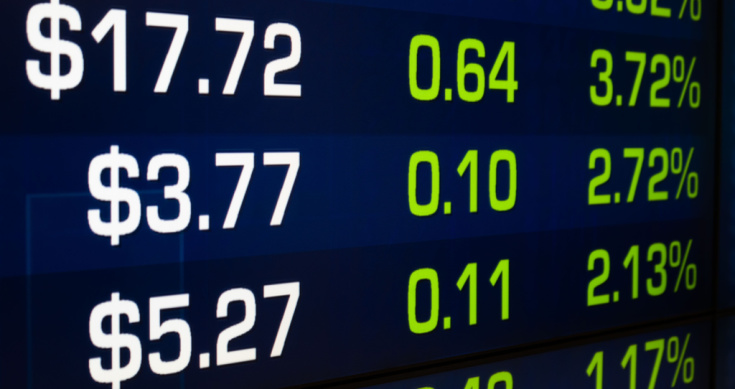This is almost a reverse stack – the biggest companies fell the most, while the smallest gained the most.

Blue chips / top twenty (Big 4, TLS, WES WOW BHP RIO etc) are the dark green line, down -14%.
That’s most than ‘the market’ (XJO / ASX top 200) down ‘only’ -6.5%.
While the smallest companies are up 25% for the year (emerging companies (XEC)
- This sounds a bit like a ‘two-speed share market’, similar to the ‘two speed economy’ Rudd/Gillard were troubled with.
Why I hear you ask?
Always a magnitude of reasons, but here’s what has been dramatically different for AU investors this FY.
- Since March 2009, there has been great safety with buying blue-chip shares in AU. They were the backbone of the 2009 Calendar Year rally (Beta drive); and
- Since May 2012, when the dividend compression trade started, the companies that benefited had high Fully Franked dividends = Bluechip shares. That was as Term Deposit from 07-09 expired – think 5yr Term Deposit rolls over from May 07 to May 12 – and continued for two years. But the music stopped in May 2015 when CBA and TLS traded ex-dividend, the slide began as investors questioned growth prospects in blue-chips. We’re yet to see a definitive end of that movement – who know, maybe that’s today?
So what did we learn, who made money and how can that help us today?
- Investors learnt the safety of bluechips is not forever – growth is a crucial ingredient
- Small and mid-caps made money. They have been the darlings of the Financial Year; ALL, DMP, COH, ORA, VOC
- Emerging companies killed the rest +25%
- This tells us that the shift is well and truly underway; a 70% gain in ALL is a better return than -15% in CBA + 7%FF divvi
Case in point is WAM, the small company specialist on the ASX. Over the last year, they have been trading at +8% above what they’re worth, why? Because investors value their skill and expertise in this area – they’re up +14% + 7% FF divvies.
Where to from here?
The tide has changed, companies providing sound growth opportunities are rewarding shareholders with stronger share prices.
The leaders today are:
- Companies with scaleable business models (software)
- Small luxuries – the companies we spend money with to treat ourselves
- Building materials – the companies we spend money when doing small changes to our homes/renos
- Ag products that have stable market they supply
- Recently added by a select group of domestic engineering, O&G and mining services
And from a commodity front:
- Graphite and lithium – where old world mining meets new world technology
- Gold – de-stabilised currencies
Check back with us next week as we bring you the leading companies form these market-beating trends.









